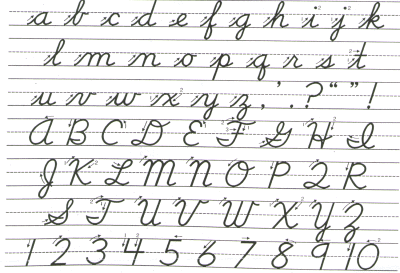For the Oct. 6 SAT, students were required to fill out an academic integrity agreement in cursive.
Groans immediately filled testing rooms, followed by questions such as “How do I write a cursive ‘s’?” and remarks like “I forgot all my cursive.”
This is just one of the many signs that cursive has almost become a forgotten art. Once a required subject drilled into students, it is now optional or even completely disregarded in most elementary schools.
Cursive used to be the chosen script for both professional and personal discourse, but now most people only use cursive for their signatures.
We cannot afford to have an art form practiced for thousands of years die out. Many languages, including Arabic and Cyrillic, are traditionally written completely in cursive. English has also been written in cursive for hundreds of years.
Many older people still use cursive, and younger generations should also be able to read and write it. Our Founding Fathers wrote several major documents, including the Declaration of Independence and the Constitution, in cursive. It would be a shame if young people could not read the writing that makes up the foundation of our country.
In addition, cursive is more personalized than printing. Every person’s handwriting is unique, and cursive emphasizes that uniqueness. Handwriting is an expression of personality and individuality, but the straight strokes of printing do not express one’s character as well as the loops, slants and twists of cursive. In fact, to verify test-takers’ identities, the SAT requires the academic integrity agreement to be in cursive because printing is more easily duplicated.
Cursive also has its practical benefits. Chief among them is that cursive can be faster than printing because the letters are joined.
Teaching cursive to elementary school students also helps them write neater because it forces them to concentrate and carefully form each letter precisely. Even if the students choose to revert back to printing in later grades, the experience of learning cursive improves their handwriting and grounds them in a tradition shared by educated people over the centuries.



























